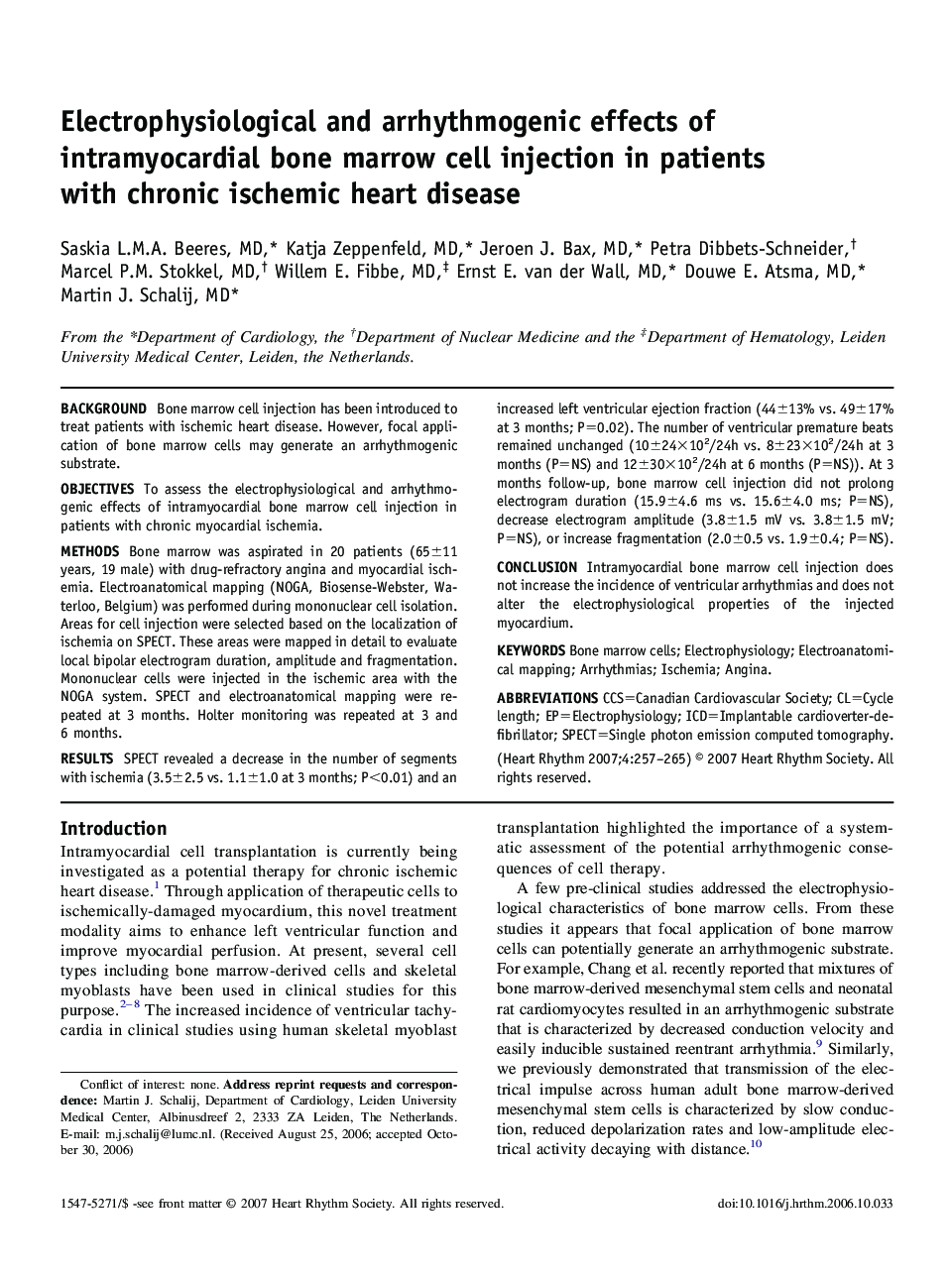| Article ID | Journal | Published Year | Pages | File Type |
|---|---|---|---|---|
| 2925053 | Heart Rhythm | 2007 | 9 Pages |
BackgroundBone marrow cell injection has been introduced to treat patients with ischemic heart disease. However, focal application of bone marrow cells may generate an arrhythmogenic substrate.ObjectivesTo assess the electrophysiological and arrhythmogenic effects of intramyocardial bone marrow cell injection in patients with chronic myocardial ischemia.MethodsBone marrow was aspirated in 20 patients (65±11 years, 19 male) with drug-refractory angina and myocardial ischemia. Electroanatomical mapping (NOGA, Biosense-Webster, Waterloo, Belgium) was performed during mononuclear cell isolation. Areas for cell injection were selected based on the localization of ischemia on SPECT. These areas were mapped in detail to evaluate local bipolar electrogram duration, amplitude and fragmentation. Mononuclear cells were injected in the ischemic area with the NOGA system. SPECT and electroanatomical mapping were repeated at 3 months. Holter monitoring was repeated at 3 and 6 months.ResultsSPECT revealed a decrease in the number of segments with ischemia (3.5±2.5 vs. 1.1±1.0 at 3 months; P<0.01) and an increased left ventricular ejection fraction (44±13% vs. 49±17% at 3 months; P=0.02). The number of ventricular premature beats remained unchanged (10±24×102/24h vs. 8±23×102/24h at 3 months (P=NS) and 12±30×102/24h at 6 months (P=NS)). At 3 months follow-up, bone marrow cell injection did not prolong electrogram duration (15.9±4.6 ms vs. 15.6±4.0 ms; P=NS), decrease electrogram amplitude (3.8±1.5 mV vs. 3.8±1.5 mV; P=NS), or increase fragmentation (2.0±0.5 vs. 1.9±0.4; P=NS).ConclusionIntramyocardial bone marrow cell injection does not increase the incidence of ventricular arrhythmias and does not alter the electrophysiological properties of the injected myocardium.
